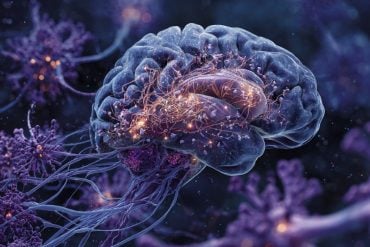Summary: New research reveals that the vagus nerve, which helps regulate appetite, interacts with socio-economic status to influence eating behavior. In a chocolate tasting study, participants from higher socio-economic backgrounds showed stronger alignment between their internal hunger signals and food intake.
However, individuals from lower socio-economic backgrounds did not show the same physiological regulation, despite similar levels of consumption. This study suggests that bodily signals for hunger and satiety may function differently depending on socio-economic conditions, providing insight into health disparities.
Key Facts:
- Vagal Tone Influence: Higher vagal activity predicted eating behavior only in participants from wealthier backgrounds.
- Weaker Regulation: Internal signals of hunger and fullness were less predictive in participants from lower socio-economic groups.
- Health Implications: These differences may contribute to dietary inequalities and long-term health disparities.
Source: Durham University
Published in the journal Food Quality and Preference, the research highlights how physiological signals, particularly those transmitted via the vagus nerve, interact with socio-economic factors to shape dietary behaviour.
The study involved 96 students from diverse socio-economic backgrounds who participated in a chocolate tasting session.

In a controlled laboratory setting, each participant was presented with a plate containing 70 milk chocolate pieces and invited to sample and rate them at their leisure.
Researchers measured each student’s heart rate variability (HRV) as a proxy for the activity of the vagus nerve – a part of the nervous system that regulates appetite and digestion.
The study’s lead author, Professor Mario Weick of Durham University’s Department of Psychology, explained: “The findings suggest that while the vagus nerve plays a key role in transmitting signals between the gut and the brain, the extent to which these signals guide eating behaviour can vary with one’s socio-economic status.
“Our research indicates that internal signals may be more closely aligned with eating behaviour in individuals from higher socio-economic backgrounds.
“In contrast, those from lower socio-economic groups appear to show a weaker link between these physiological signals and their food consumption.”
The research builds on longstanding theories regarding the impact of socio-economic factors on health and dietary habits.
Traditionally, disparities in diet have been attributed to differences in food access and external factors.
However, this study shifts the focus towards internal regulatory processes.
The data revealed that participants from more advantaged backgrounds consumed more or less chocolate depending on their vagal tone, which can signal both hunger and satiety.
Conversely, in individuals from less advantaged backgrounds, this physiological regulation was not as evident.
Professor Milica Vasiljevic of Durham University, the study’s co-author added: “Our study does not support the idea that individuals from lower socio-economic groups eat more or are inherently more impulsive.
“Rather, it highlights that the internal regulation of eating – how our bodies naturally signal when to eat and when to stop – may function differently depending on our socio-economic backgrounds.
“This could have important implications for understanding broader health inequalities.”
While the research focused specifically on chocolate consumption as a model for eating behaviour, the implications may extend to other types of food and dietary patterns.
Future research is needed to explore whether similar patterns are observed across different populations and with other food categories.
This work marks a significant step forward in disentangling the complex relationship between socio-economic status, physiological regulation, and dietary habits.
By bringing attention to the role of internal bodily signals in shaping eating behaviour, the research offers new perspectives for developing public health strategies that address dietary inequalities and associated long-term health outcomes.
About this diet and neuroscience research news
Author: Alexa Fox
Source: Durham University
Contact: Alexa Fox – Durham University
Image: The image is credited to Neuroscience News
Original Research: Open access.
“Socio-economic status modulates the link between vagal tone and chocolate consumption” by Mario Weick et al. Food Quality and Preference
Abstract
Socio-economic status modulates the link between vagal tone and chocolate consumption
Socio-economic status (SES) correlates with patterns of food consumption, yet the underlying physiological mechanisms remain unclear.
This study examines how SES modulates the relationship between vagal tone, a physiological marker of self-regulation, and chocolate consumption.
Different hypotheses about how SES may be linked to vagal regulation of chocolate consumption were put to a test in a laboratory study with a socio-economically diverse group of students (n = 96).
Vagal tone was assessed using an index of heart rate variability (HRV–HF) measured at rest (baseline) and during acute stress.
Participants’ chocolate consumption was measured using a bogus taste test. The results showed that socio-economic status interacted with vagal tone to influence chocolate consumption.
Findings for both subjective and objective indicators of SES converged in showing that vagal tone predicted chocolate consumption among higher SES participants, with higher vagal tone associated with lower chocolate consumption.
No such relationship was found in lower SES participants, suggesting a dissociation between vagal regulation and eating behaviour in this group.
These findings highlight the importance of considering autonomic regulation in understanding socio-economic disparities in dietary behaviours.






